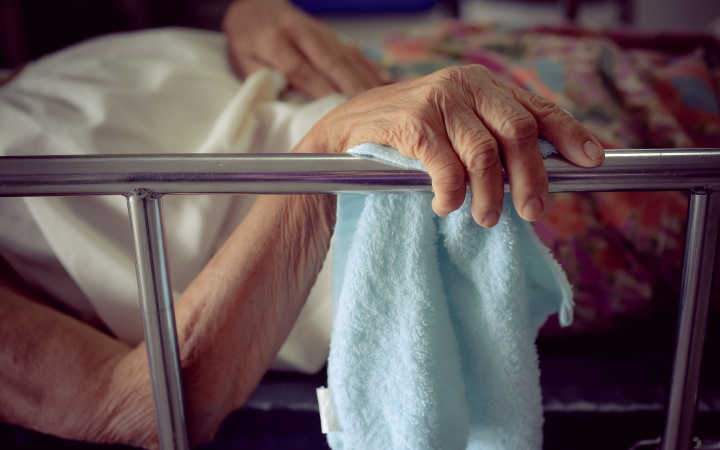
Bed Rails: To Use or Not to Use?
From January 1, 1985, to January 1, 2013, the Food and Drug Administration (FDA) received 901 medical device reports related to bed rails. These reports described instances of residents being caught, trapped, entangled or strangled in hospital beds. Of these 901 incidents, 531 resulted in death.
Over the past decade, healthcare facilities have made a significant reduction in utilization of bed rails. However, there are healthcare facilities who continue to use them for fall prevention or as a support mechanism to assist the resident in repositioning and transfer.
As part of a comprehensive update of nursing home regulations adopted in 2016, the federal Centers for Medicare & Medicaid Services enacted regulation F700 regarding bed rails. The regulation states:
“The facility must attempt to use appropriate alternatives prior to installing a side or bed rail. If a bed or side rail is used, the facility must ensure correct installation, use and maintenance of bed rails.”
Key elements in adherence to this regulation includes:
- Comprehensive assessment of the resident’s risk of entrapment prior to installation
- Explanation of the risk and benefits of rail usage to the resident or resident representative
- Obtaining informed consent
- Ensuring the bed’s dimensions are appropriate for the resident’s size and weight
- Following the manufacturer’s recommendations and specifications for installing and maintaining bed rails
Bed rail usage is not appropriate for all residents. Residents at greatest risk for injury include, but are not limited to, those who have conditions such as agitation, delirium, confusion, pain, uncontrolled body movement, and those requiring assistance in toileting.
A comprehensive assessment should be completed prior to bed rail usage. This assessment needs to include:
- Medical needs warranting bed rail use
- Resident’s benefits from bed rail use
- Risks associated with bed rail use and how those risks will be lessened
- All failed attempted alternatives
If the facility determines and the resident or resident representative consents to bed rail usage, an assessment needs to be completed quarterly and with change in the resident’s condition.
Entrapment occurs when a resident is caught between the mattress and bed rail or in the bedrail itself. As a facility, develop and implement a plan for facility staff to ensure there is no gap between the mattress and bed rail, the bed rail is firmly affixed to the bed frame and the gaps in the bed rail are not wide enough for the head or body to become lodged prior to placing the resident in bed. Bed rails may become loose and gaps can be created by decompressed mattresses so develop a plan for routine safety checks.
No one wants a resident to suffer any injuries related to bed rails. As a facility, do your part to reduce the risk of this happening to one of yours. For assistance in developing a plan to protect your residents from bed rail risks, contact a member of the AssuredPartners Senior Living Risk Solutions team.

Related articles

The healthcare industry is navigating turbulent waters due to a significant labor shortage. Senior living facilities, a critical component of healthcare for the aging population, are particularly...

Healthcare professionals, particularly those involved in long-term care and risk management within memory care settings, must navigate the complex terrain of dementia patient behavior management with...

Welcome healthcare heroes and long-term care specialists! We're excited to unveil our upcoming webinar series, which promises to provoke thought, inspire action, and provide expert knowledge in...